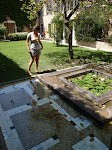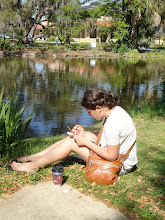Full deterioration is going to occur, so why not condense the time to force leftover traces more rapidly but resist a hasty ruination?
How can architecture still define space for inhabitation, and simultaneously embrace environmental processes?
an olive green catches your eye, pulling it to the ground
it has made a surprisingly exact line weaving through the cobblestone mortar
leading you on a journey from the tufa stone wall to the drainage slope
the vegetation left behind from a stream’s repetitive path
does it rain here often?
All materials are impressionable. They preserve phenomena that has occurred over time. These phenomena are environmental elements and humans. However, water is the largest contributor to weathering; staining, decay, and horizontal datum lines left by floods and canal tides. A material’s ability to directly respond to its environment makes spaces that are alive and trodden. It is the discovery of prior occurrences that create intrigue and desire for interaction.
Weathered surfaces make the experience and intention of a space, defining it through an orientation and layering of materials. Different levels of porosity and repetition determine the preserving of more or less evidence on a material. Existing surfaces that already contain traces are incorporated with present and future surfaces to provide the understanding and education of the effects of water. Like the time sensitive effects of water, a place of temporal rest and experiential understanding is created in the exterior environment.




No comments:
Post a Comment